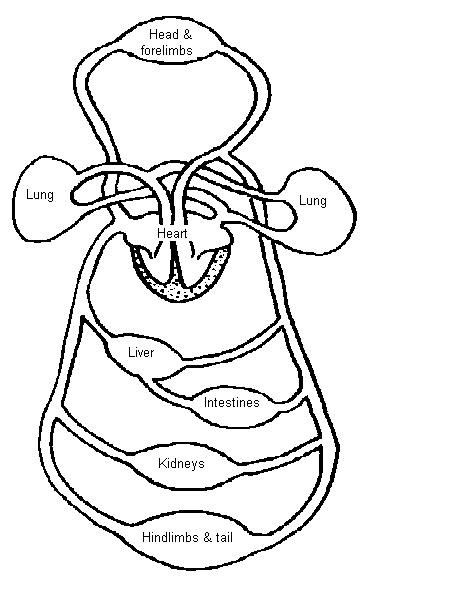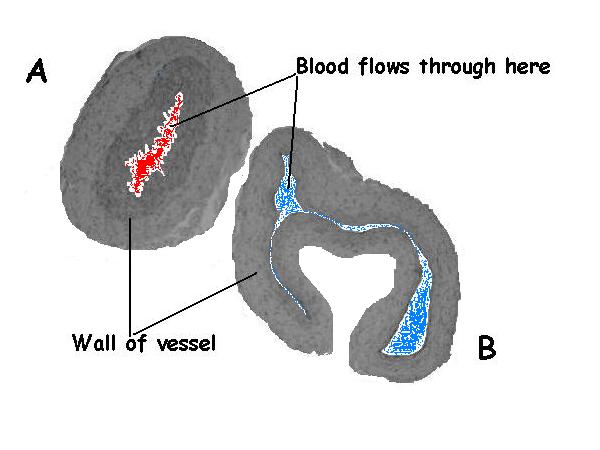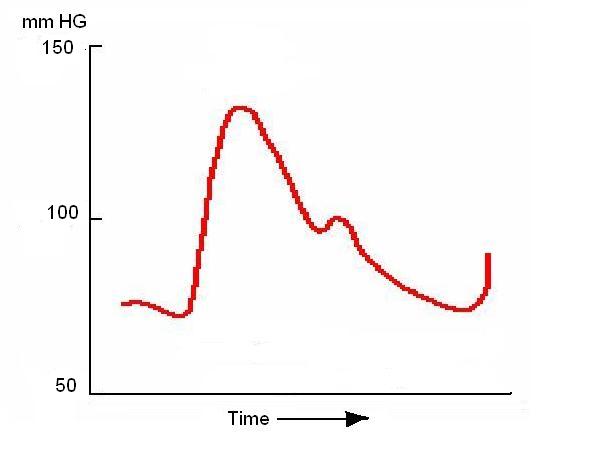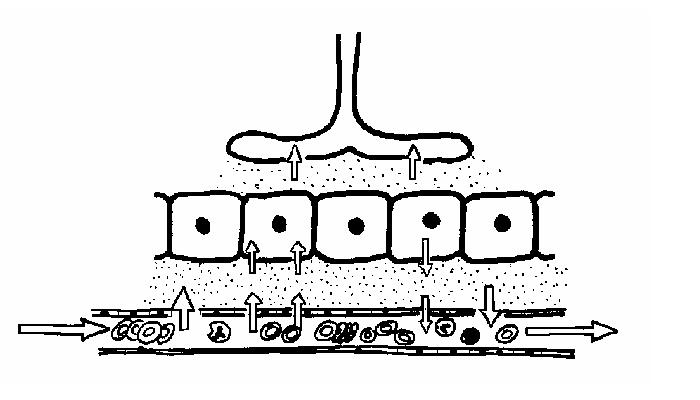Circulatory System Worksheet
1.The diagram below shows the main vessels of the blood circulation system of a mammal.
- a) Add the following labels to the diagram below:
- caudal vena cava; cranial vena cava; aorta; hepatic portal vessel
- pulmonary artery; pulmonary vein; renal artery
- b) Add arrows to show the direction in which the blood flows
- c) Colour the vessels that carry oxygen rich blood "red" and oxygen poor blood "blue".
2. Arrange the following types of blood vessel in the correct order as blood would flow down them from the heart to the body and back to the heart again.
A. other veins; B. venules; C. capillaries; D. arterioles; E. other arteries. F. vena cava; G. aorta
| Heart | ............ | ............ | ............ | ............ | ............ | ............ | ............ | Heart |
|---|
3. Fill in the blanks in the following table on arteries, veins and capillaries.
| Arteries | Capillaries | Veins | |
|---|---|---|---|
| Structure of wall | 3 layers | ||
| Thickness of wall | ................... | Very thin | ................... |
| Retain shape or collapse
when no blood passes |
................... | ................... | ................... |
| Direction of blood flow | ...................... | ...................... | Towards heart |
| Speed of blood flow? | ................... | .................. | .................. |
| Blood pressure | High | ................. | ................. |
| Valves present? | .............. | No | .............. |
| Pulse present? | .............. | .............. | .............. |
| Carry oxygenated/deoxygenated blood? | ................... | ................... | ................... |
4.
The photo below shows cross sections through an artery and a vein.
- a. Label which vessel is the artery and which the vein.
- b. Give 2 reasons for your answer.
- Reason 1……………………………………………………………………………..
- Reason 2……………………………………………………………………………..
5.
True or false? If false give the correct answer.
- Mammals have a double open blood system. T / F
- Arteries only carry oxygenated blood. T / F
- Artery walls have many more layers of tissue in them than the walls of veins. T / F
- The pulse is only felt in arteries. T / F
- Capillaries have valves in them to stop the blood flowing backwards. T / F
- Blood leaks out of capillaries so that the oxygen and glucose etc. can reach the cells. T / F
- Diastole is the phase between pulses. T / F
- Blood flows along veins back to the heart because of gravity. T / F
6. The diagram below shows the blood pressure during the passage of the pulse along an artery.
- Add labels to the diagram to show: the pulse; diastole; systole.
7. As there is no pulse in veins, what moves the blood along them? (Give at least 2 methods)
- 1. .................................................
- 2...................................................
8. Name the vessel that:
- Carries oxygenated blood to the heart muscle...............................
- Supplies the brain with oxygenated blood...............................
- Carries deoxygenated blood to the lungs...............................
- Carries blood from the intestines to the liver..............................
- Carries deoxygenated blood away from the kidneys...............................
9. Look at the diagram below and then answer the following questions.
- a. Which is the blood capillary?
- b. How thick is the wall of the capillary?
- c. What is happening to the blood pressure as the blood flows along the capillary?
- d. What substances pass out of the capillary walls to surround the tissues?
- e. What is tissue fluid?
- f. Which vessel is the lymphatic vessel?
- g. How do lymphatic vessels differ from capillaries?
- h. What passes into the lymphatic vessel?
- i. How does lymph differ from tissue fluid?
- j. Why does the fluid leave the capillary at the beginning of the capillary bed and flow back in at the other end?



